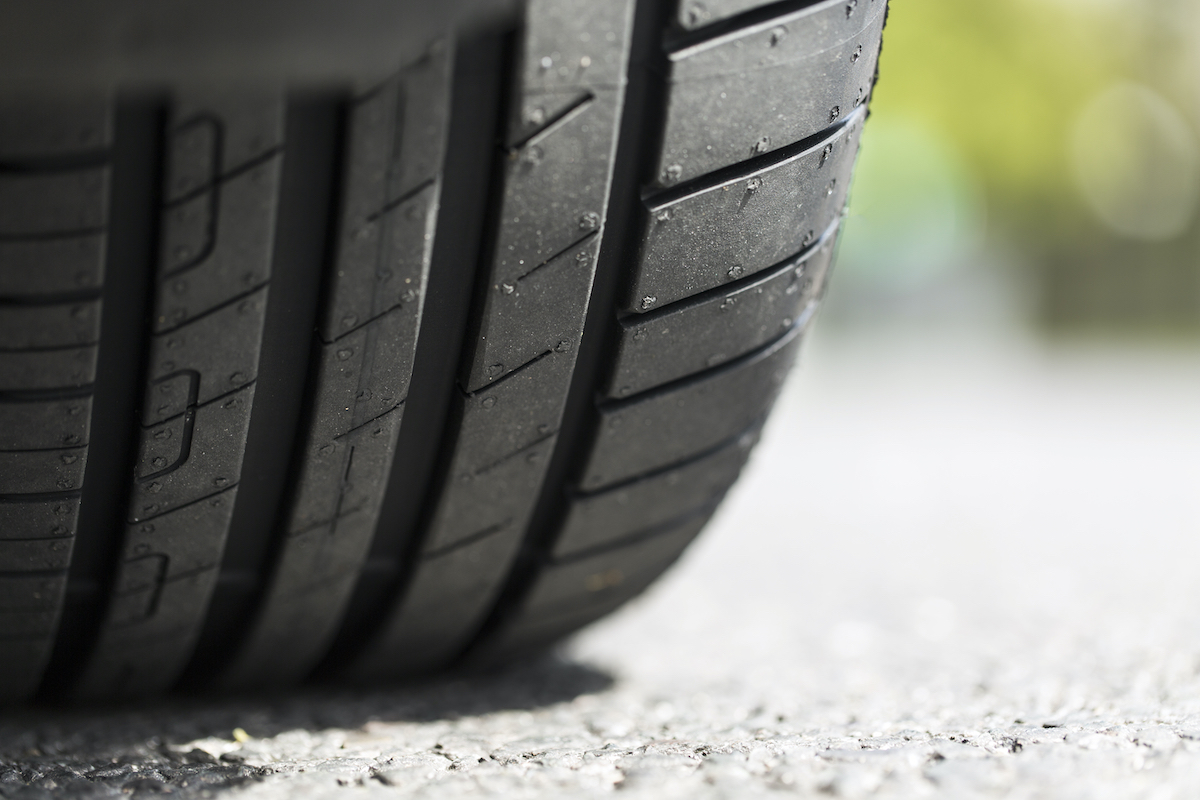A Speedy Summary
- There are three main methods of finding your tyre size: checking on tyre’s sidewall, on the tyre placard, or in your owner’s manual
- The incorrect tyre size can be dangerous and cause insurance complications
- It’s also easier to get a quick quote if you know what your tyre size!
How do I know what the correct tyre size is for my vehicle? How do I know if my current tyres are the right ones? How do I read my tyre markings? We’ll explain all that and more in this guide to ensuring that your tyre fits.
Method 1 - Checking the Sidewall of Your Tyres for Tyre Markings
The easiest way to tell your tyre size is to look on the outside of the tyre closest to the rim. There, you will see a series of letters and numbers. e.g. 175/65R14
Method 2 – Check the tyre placard
To make sure you have a legal tyre it’s best to check the door placard. Open the driver’s side door, there will be a small placard with information on the side near the seat. It has your tyre and loading information, which will tell you what size tyre should be on your vehicle.
Opening the door of your vehicle, you’ll be able to find a placard which contains the legal tyre sizes for your car. It’s important to check this as well as the tyres on your car at present, as the tyres on your car at present could be incorrect.
This placard might even detail a different set of tyres for the front and back: be sure to take note of this.
Method 3 – Check your car's owner's manual
Probably the easiest way to find the right tyre size for your car is to check the owner’s manual of your car. It’s also good to cross-check this with any value you might see on the tyres themselves.
Different tyre sizes explained: How to read and understand your Car Tyre Size.
Your tyre size appears as a series of letters and numbers, for example, 175/ 65/R14 86T.
This particular tyre size indicates a tyre width of 175mm, an aspect ratio of 65, a rim diameter of 14 inches, a load index of 86, and a ‘T’ speed rating. We’ll explain each of these terms below.
Tyre Width
This is represented by the first three-digit number in the sequence (e.g 175 as per the above example). This is the tyre’s width in millimetres. It’s also sometimes referred to as the section width. A wider tyre generally provides better grip, but can decrease fuel economy by generating more rolling resistance.
Aspect Ratio
The aspect ratio (e.g. the 65 as per the above example) refers to the height of the tyre’s sidewall as a percentage of its width. A higher aspect ratio tends to offer more cushioning on bumpy roads, providing a smoother ride feel.
Radial Construction
The ‘R’ refers to the tyres radial ply construction. Almost all car tyres are radial tyres – you might find non-radial tyres on off-road or machinery vehicle types: you might see a ‘D’ for diagonal or an ‘RF’ for run-flat tyres.
Rim Diameter
The rim size is, simply, the diameter of the wheel’s rim, measured in inches.
Load Index
This is a numerical value that dictates the maximum weight that a single tyre can carry when it’s at its maximum speed rating.
Speed rating
This is indicated by a letter (‘T’ was the example), which speaks to the maximum speed that the tyre can handle at its maximum load capacity. The closer the letter is to “Z”, the higher that maximum speed is.
Why is it important to have the correct tyre size?
Knowing your tyre size can help us give you an accurate quote and get you in and out faster from the store. Learn how to read your tyre markings and ensure you’ve got the right choice for optimal performance.
Its also important for the safety of yourself on the road as well as avoiding any hefty and unnecessary fines or insurance issues.
From ensuring you’re matching the tyre to the wheel rim, to ensuring you’re not exceeding the maximum load capacity of your tyre, it’s important to pay attention to what’s on your wheels. Here are a few of the key reasons that paying attention to those letters and numbers on your tyre placard are so important…
Steering
Incorrect tyre sizes can impact steering negatively, decreasing handling and presenting dangers on the road.
Accelerating and decelerating
The wrong tyre size can impact acceleration and deceleration, giving inaccurate speedometer readings. You might be at increased risk of speeding, as well as less effective when braking.
Insurance and legal issues
You can run into complications with your insurance if your car is not using the type of tyres that it is legally required to. Don’t risk it!
Quicker quotes
You’ll be able to get a quote over the phone or even online if you know your tyre size without having to get it checked professionally. This can also help you find out if your chosen tyre provider has the right stock for you and when you might expect to be able to get your tyres changed over.
We make it simple to keep your car moving
We’re here to provide a transparent and efficient service that demystifies motoring for you. So if you need your tyre sizes explained in person, we’re always happy to help.
Check out Tammy’s tips and guides in the video here. And, if you’re still confused, come and visit us!
There’s no need to book in… just drive in and we’ll help you get a handle on your tyre specifications.
We are open weekdays 8am- 5pm and Saturday 8am-1pm.
If you require any assistance, we are happy to help! Please give us a call on (07) 3271 4300 or get in touch via email at sales@colemantyreswacol.com.au.




